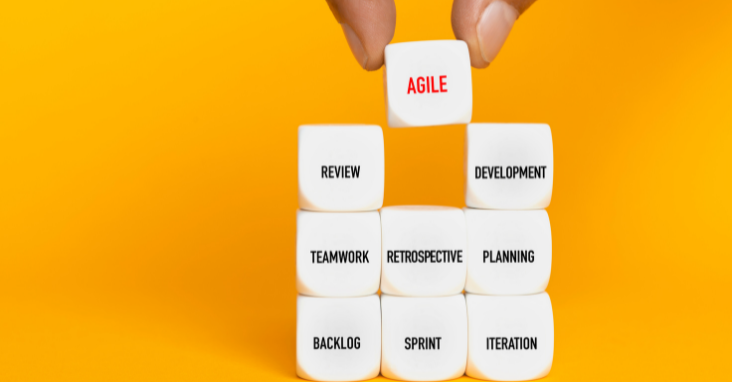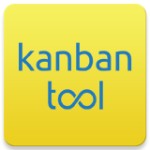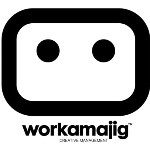Hey there, curious reader! If you’re like many modern professionals, the term “agile workflow” has likely popped up on your radar more times than you can count. The digital buzz has been ringing with praises about agile unified process and how it’s revolutionizing the way teams work and produce outcomes. But what’s all the fuss about? Is it just another passing trend, or is there something genuinely transformational about this approach?
Let’s set the stage.
Imagine a world where work processes are rigid, linear, and resistant to change. Projects follow a stringent pathway, and there’s little room for deviation. A hiccup or change in requirements? Panic ensues. But as the world around us started moving at an unprecedented pace, this traditional workflow approach began showing cracks. Enter: Agile Workflow. This knight in shining armor promises flexibility, adaptability, and a keen focus on producing tangible results in shorter cycles.
Now, whether you’re a project manager looking for efficient ways to handle team tasks, a startup founder aiming for a streamlined product development process, or just someone intrigued by productive work methodologies, this guide is for you. By the time you get to the end of this comprehensive deep dive, not only will you understand the what and why of agile workflow, but you’ll also grasp the how, allowing you to consider its potential integration into your work ecosystem.
So, without further ado, let’s embark on this enlightening journey together. Grab your notebook (or a digital tool of your choice), a refreshing beverage, and let’s unravel the mystique of the most agile feature driven development workflow, piece by piece.
Agile workflow is a flexible and iterative approach to project management, emphasizing collaboration, adaptability, and delivering value. By understanding and using agile process flow applying its principles, businesses can enhance productivity and customer satisfaction.

What Exactly is an Agile Workflow? Diving Deep into the Methodology
If you’ve ever tried piecing together a jigsaw puzzle, you know that it’s a game of trial and error. You place pieces together, step back, reassess, and adjust until you see the bigger picture. Now, transpose that logic into a work environment. That’s agile workflow for you – a method of bringing tasks and processes together in an iterative manner, constantly re-evaluating and adjusting until the desired outcome is achieved.
Defining the Agile Workflow
At its core, an agile workflow is a structured yet flexible approach predominantly used in software development but has seen adoption in various industries and sectors over the years. It challenges the traditional linear way of working and encourages teams to operate in iterative cycles, with a keen focus on adaptability and customer feedback.
The Cornerstones of Agile: Key Features
To truly understand agile, it’s vital to break down its fundamental features:
- Iterative Cycles: Often known as “sprints”, these are condensed work periods where specific tasks or project segments are targeted. A sprint usually lasts between 2-4 weeks, at the end of which a deliverable, however small, is produced.
- Collaboration at Its Peak: One of the defining elements of agile is the emphasis on team collaboration. It’s not just about individual tasks but how these tasks interplay in the larger scheme of things. Daily stand-up meetings, retrospectives, and planning sessions are common, ensuring all members are aligned and informed.
- Feedback Loops and Adaptability: Instead of waiting for the final product to gather feedback, agile encourages frequent touchpoints. This allows teams to pivot when necessary, making sure that the end product or solution is as aligned with the user’s needs as possible.
- Customer-Centric Approach: Instead of being confined to the stipulations of a contract or initial requirements, agile places the customer at the center. By engaging stakeholders and constantly revisiting user feedback, the final deliverable is more in tune with actual market needs.
- Transparency and Visibility: Agile tools and practices, like kanban boards or burndown charts, make it easier to visualize progress and bottlenecks. Everyone from the team member to the stakeholder has a clear view of where things stand, fostering trust and open communication.
The Underlying Principles
While the above features provide a structural view of agile, its essence lies in its core principles. Agile champions:
- Continuous Improvement: Always seeking ways to better processes and outputs.
- Responsiveness: Reacting promptly to changes without derailing the entire project.
- Empowered Teams: Rather than top-down directives, teams are trusted with decision-making.
- Value Delivery: Focusing on delivering tangible value at regular intervals, ensuring stakeholders see real progress.
Key Takeaways:
- Agile workflow is an iterative and adaptive approach to tasks and projects.
- Collaboration, regular feedback, and customer-centricity are its hallmarks.
- It’s more than just a methodology; it’s a mindset that prioritizes value delivery, transparency, and continuous improvement.

Why Should You Care About Agile Workflow? Unpacking its Unrivaled Significance
We live in an era marked by rapid technological advancements, ever-changing market dynamics, and an evolving consumer landscape. In such times, clinging to old, rigid work methodologies can be likened to trying to fit a square peg into a round hole. It’s not just ineffective but can be detrimental to growth and innovation. This is where the agile workflow enters, promising a solution that’s as dynamic as the world around us. But why should this matter to you? Let’s delve deeper.
A Response to a Dynamic World
Agile isn’t just a buzzword; it’s a reaction to the unpredictability of the modern business environment. Traditional workflows, which rely on fixed plans and set sequences, often falter in the face of unexpected changes. Agile, with its flexible nature, is designed to thrive amidst uncertainties, turning potential obstacles into avenues for innovation.
Key Advantages of the Agile Approach
- Flexibility as a Superpower: One of agile’s standout features is its inherent adaptability. Be it a sudden market shift, a change in client requirements, or an internal project tweak; agile teams can pivot with ease, ensuring minimal disruptions and maintaining productivity.
- Efficiency and Speed: By compartmentalizing projects into smaller, manageable sprints, the issues are spotted and rectified faster. This approach not only speeds up project delivery but ensures a higher quality output. It’s the difference between catching a small leak versus dealing with a flood.
- Empowered Collaboration: Gone are the days when teams worked in silos. Agile promotes a collaborative ethos where every voice matters. With regular communication touchpoints, everyone from developers to marketers feels involved, fostering a sense of collective ownership.
- Customer in the Driver’s Seat: In traditional models, once a project scope is defined, there’s little room for alteration. Agile turns this on its head. By continually gathering and integrating customer feedback, products or projects evolve in real-time, ensuring they resonate with end-users.
- Transparent Operations: With tools and practices that provide visual insights into project status, stakeholders are never in the dark. This transparency builds trust, ensures accountability, and promotes informed decision-making.
- Optimized Resource Utilization: Agile helps in better resource allocation. Since you’re focusing on smaller sprints and immediate tasks, there’s less wastage of time and resources. It’s about being lean and mean!
The Bigger Picture
Beyond the tangible benefits, adopting an agile workflow signals a mindset shift for an organization. It showcases a commitment to continuous learning, adaptability, and a dedication to delivering the utmost value to customers. It’s not just about doing work; it’s about doing meaningful, impactful work that resonates.
Key Takeaways:
- Agile workflow is a reflection of and response to the dynamic, ever-evolving business landscape.
- Its benefits range from enhanced flexibility and efficiency to improved collaboration and customer satisfaction.
- Adopting agile isn’t just a process overhaul; it’s an organizational mindset shift towards adaptability, innovation, and continuous value delivery.
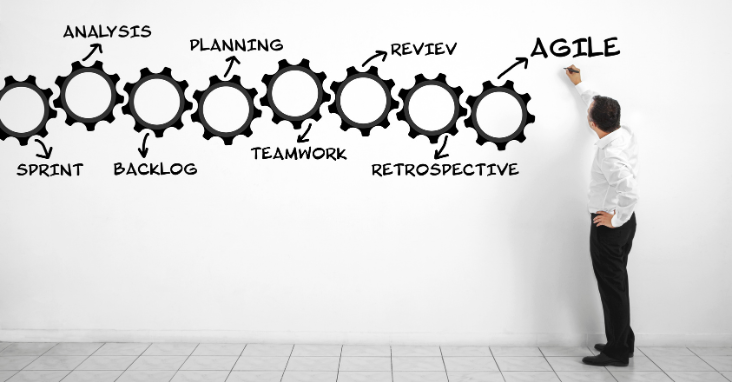
Incorporating Agile Workflow into Your Daily Operations: A Practical Guide
There’s a common misconception floating around – that the agile workflow process is exclusively for software development or big tech companies. The truth? Agile’s principles are universal. Regardless of your industry or business size, adopting an agile approach can bring about transformative results. But how do you integrate it into your day-to-day? Fear not! Here’s a practical guide to help you navigate this transition smoothly.
Understanding the Agile Mindset
Before diving into methodologies and tools, it’s crucial to grasp the philosophy behind agile. At its heart, agile emphasizes:
- Value-driven results: It’s about delivering results that matter, not just completing tasks.
- Open communication: Frequent touchpoints and transparency are non-negotiable.
- Iterative progress: Instead of chasing perfection in one go, aim for continuous improvement.
Internalizing these principles is the first step in your agile journey.
Starting Small: The Power of Pilot Projects
Jumping headfirst into a complete agile overhaul can be daunting. That’s why starting with a pilot project is wise. Choose a task or a small project and apply agile methodologies. This serves a dual purpose: it familiarizes your team with agile practices and provides tangible evidence of agile process mapping its efficacy.
Building an Agile Team Structure
For agile to work, traditional hierarchical structures might need a shakeup. Consider forming cross-functional sprint teams where members from different departments come together to work on specific projects. Such teams are self-organizing and empowered, leading to quicker decision-making and a broader skill set.
Embracing Agile Tools and Techniques
The market is rife with tools designed to facilitate and create an agile workflow too. Here’s a quick breakdown:
- Project Management: Tools like Jira, Trello, and Asana allow teams to visualize tasks, monitor progress, and prioritize work items.
- Communication: Platforms such as Slack or Microsoft Teams enable real-time communication, essential for daily stand-ups or sprint reviews.
- Documentation: Tools like Confluence help teams maintain documentation, ensuring everyone is on the same page.
Training and Continuous Learning
Agile is not just a one-off process change; it’s a continuous journey. Invest in training programs for your team. Whether it’s formal certifications, workshops, or webinars, continuous learning ensures that your team stays updated with the latest in agile practices.
Gathering Feedback and Iterating
Once you’ve started on your agile journey, don’t forget to pause and reflect. Regularly gather feedback from your team and stakeholders. What’s working? What needs tweaking? Use this feedback to refine your approach, ensuring that your agile implementation remains effective and relevant.
Championing an Agile Culture
Finally, for agile to truly take root, it needs to be more than just a set of practices. Foster a culture that celebrates adaptability, collaboration, and continuous improvement. Recognize and reward agile champions within your team, and soon, the entire organization will echo with the ethos of agile.
What is the Agile Workflow Lifecycle?
An Agile software development lifecycle covers all stages of a process flow required for a project to be considered complete. The lifecycle is usually divided into 5 stages determining the project’s status – concept, inception, iteration, release, and retirement. Oftentimes, it is common for projects to cycle through these stages multiple times as they evolve and adapt to changing requirements and user feedback.
This cyclical nature of the agile workflow ensures that the software remains relevant, efficient, and in tune with the users’ needs. As a result, instead of being a linear progression from start to finish, the agile lifecycle embodies the principle of iterative development, where continuous improvement, regular feedback, and adaptability are paramount. This approach offers teams the flexibility to pivot when necessary, ensuring that the final product is not only functional but also aligns closely with the end user’s expectations and the ever-changing market dynamics.
Key Takeaways:
- Transitioning to agile begins with understanding and embracing its core principles.
- Start with pilot projects, and gradually scale your agile practices.
- Build cross-functional teams, invest in the right tools, and prioritize continuous learning.
- Regular feedback and a company culture that champions agile are crucial for long-term success.
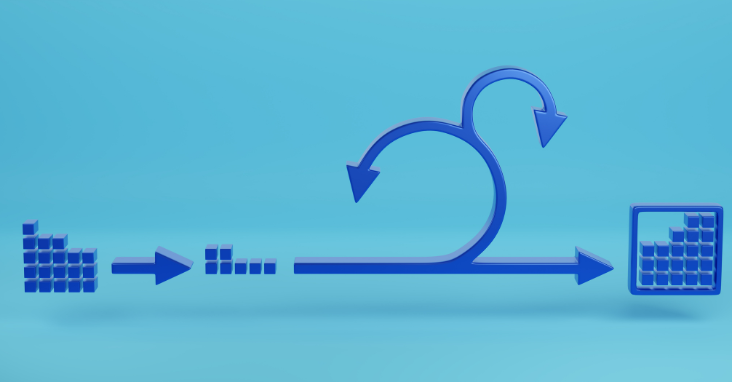
Software Tools to Enhance Your Agile Workflow: The Digital Catalysts
If we view the agile and workflow process as a meticulously orchestrated dance, software tools are the unsung choreographers that ensure each step seamlessly follows the next. These tools not only make the execution of agile principles more manageable but also amplify their benefits. Here’s a closer look at some of the game-changers in the market and how they can supercharge your agile journey.
Project Management Powerhouses
– Jira: Originally designed for bug tracking, Jira by Atlassian has evolved into a robust and agile development workflow and project management tool.
- Unique Feature: Customizable workflows allow teams to tailor their task management processes.
- Why Use It: With its robust reporting features and integration capabilities, Jira offers a holistic view of your project’s progress.
– Trello: Known for its intuitive drag-and-drop interface, Trello’s card-based system is perfect for visualizing task and project progress throughout.
- Unique Feature: Power-Ups! These are add-ons that enhance functionality, from calendar views to Gantt charts.
- Why Use It: For teams new to agile, Trello offers a straightforward, visually appealing introduction to task management.
– Asana: Straddling the line between simplicity and feature-richness, Asana is versatile and suitable for a range of projects.
- Unique Feature: Timeline view allows teams to visualize project pathways and adjust in real-time.
- Why Use It: Asana’s user-friendly interface ensures quick onboarding, and its powerful integrations make it a one-stop solution for many teams.
Seamless Communication Channels
– Slack: More than just a messaging app, Slack has become an essential hub for team communication.
- Unique Feature: Channels! Organize discussions by projects, teams, or topics.
- Why Use It: Integration capabilities mean you can bring in data from other tools, making it a centralized communication hub.
– Microsoft Teams: Part of the Microsoft 365 suite, Teams combines chat, video conferencing, and file collaboration.
- Unique Feature: Direct integration with Microsoft products like Word, Excel, and PowerPoint.
- Why Use It: For businesses already invested in the Microsoft ecosystem, Teams provides a seamless communication experience.
Documentation and Knowledge Sharing
– Confluence: Another gem from Atlassian, Confluence, is a collaborative wiki tool that integrates effortlessly with Jira.
- Unique Feature: Dynamic templates allow for creating everything from meeting notes to product roadmaps.
- Why Use It: Centralizing documentation ensures that all team members, new or old, have access to the knowledge they need.
– Notion: A versatile workspace, Notion combines note-taking, task management, and knowledge sharing.
- Unique Feature: Its block-based system allows users to embed everything from databases to calendars.
- Why Use It: For teams looking for an all-in-one tool, Notion’s flexibility is unmatched.
Feedback and Review Platforms
– Miro: An online collaborative whiteboarding platform, Miro is perfect for brainstorming sessions, retrospectives, or mapping out user journeys.
- Unique Feature: Infinite canvas ensures teams never run out of space.
- Why Use It: Miro’s interactive elements foster creativity and make feedback sessions engaging.
– ReviewBoard: Tailored for code reviews, this tool helps development teams maintain code quality.
- Unique Feature: The dashboard view highlights pending reviews, ensuring nothing slips through the cracks.
- Why Use It: Efficient code reviews are crucial for agile teams, and ReviewBoard streamlines this process.
Key Takeaways:
- The right software tools amplify the benefits of an agile workflow.
- Choose project management tools based on your team’s needs, from the simplicity of Trello to the versatility of Asana.
- Effective communication, centralized documentation, and continuous feedback are pillars of agile, and there are tools tailored for each.
- Embracing these digital choreographers ensures that your agile dance is not just efficient but truly graceful.

FAQ: Unraveling the Mysteries of Agile Workflow
When diving into the realm of agile workflow management, it’s natural to be faced with a plethora of questions. After all, integrating a new methodology into your operations is no minor feat. Below, I’ve addressed some of the most common questions to help dispel any uncertainties you might harbor.
1. Is Agile Only Suitable for Software Development?
While agile methodologies originated in the software development world, their principles are universally applicable. Organizations across industries, from marketing to manufacturing, have successfully implemented agile practices to enhance flexibility, responsiveness, and customer satisfaction.
2. How Does Agile Differ from Traditional Project Management?
Traditional project management often follows a linear approach: define, design, develop, and deliver. Agile, on the other hand, is iterative. It breaks projects into smaller cycles called ‘sprints,’ emphasizing adaptability, continuous feedback, and value-driven results.
3. Are Scrum and Agile the Same Thing?
Not exactly. Think of agile as the overarching philosophy and Scrum as one of its frameworks. While Scrum incorporates agile principles, it comes with its specific roles (like Scrum Master) and rituals (like Daily Stand-ups). There are other agile frameworks too, like Kanban and Extreme Programming (XP).
4. How Long is a Typical Sprint in Agile?
A sprint generally lasts between one to four weeks. However, the duration can be adjusted based on the project’s requirements and development team’ preferences. The key is to keep it consistent once decided.
5. What Happens if the Team Can’t Complete the Sprint’s Tasks?
It’s not uncommon for teams to overestimate or encounter unforeseen challenges. In such cases, the unfinished tasks and product backlog are evaluated and can be moved to the next sprint or reprioritized. Agile emphasizes learning from these situations to improve future estimations and planning.
6. How Does Agile Ensure Quality?
Agile places a significant emphasis on continuous feedback, both from team members and stakeholders. Regular reviews, combined with practices like Test-Driven Development (TDD) in software projects, ensure that quality is maintained throughout the development process.
7. Can Large Organizations Adopt Agile?
Absolutely! While agile’s roots are in smaller, more nimble teams, many large organizations have adopted agile at scale. Frameworks like the Scaled Agile Framework (SAFe) or Large Scale Scrum (LeSS) have been designed specifically to address the complexities of bigger enterprises.
8. How Do Clients Fit into the Agile Process?
Clients play a pivotal role in agile workflows. Regular feedback loops, like sprint reviews, ensure that the client and project team’s voice is consistently heard. This collaborative approach ensures that the final product aligns closely with client expectations and needs.
9. Is Shifting to Agile Expensive?
Transitioning to agile may involve initial costs, like training or new software tools. However, the long-term benefits—faster time to market, improved team collaboration, and enhanced customer satisfaction—often outweigh these upfront investments. It’s a shift from a short-term cost perspective to a long-term value perspective.
10. Can We Mix Agile with Other Methodologies?
Certainly! Many organizations adopt a hybrid approach, blending agile practices with other methodologies. The key is to ensure that the core principles of agility—adaptability, customer-centricity, and continuous improvement—remain intact.
Key Takeaways:
- Agile’s principles extend beyond software development and are applicable across industries.
- Agile’s iterative approach contrasts with traditional linear project management.
- Scrum is a framework within agile, and there are other frameworks like Kanban and XP too.
- Sprints, feedback loops, and client collaboration are pivotal in agile.
- Transitioning to agile is an investment in long-term value and efficiency.

Conclusion
As we come to the end of this exploration of agile flow, it’s crucial to zoom out and see the bigger picture. At its core, an agile workflow is not just a set of processes or tools—it’s a mindset. It’s a commitment to adaptability, a dedication to delivering value, and above all, an embrace of collaboration and transparency.
In our rapidly evolving world, where change is the only constant, traditional methods often fall short. Customer preferences shift, markets evolve, and new challenges emerge almost daily. In such an environment, clinging to rigid structures or set-in-stone plans can hinder progress. Agile offers an antidote to this rigidity. By breaking projects into smaller, manageable chunks and emphasizing frequent feedback, the agile methodology enables organizations to pivot swiftly and respond to change proactively.
But perhaps, the most remarkable aspect of agile is its human-centric approach. By fostering open communication, promoting team autonomy, and placing customer needs at the forefront, agile doesn’t just improve efficiency—it enhances job satisfaction and fosters a culture of continuous learning and improvement.
For those still on the fence about adopting agile, consider this: the digital age is upon us, and with it comes an inherent unpredictability. The question isn’t whether change will come, but how equipped you are to handle it. By embedding agile principles into your own agile workflow processes, not only do you gear up to meet challenges head-on but also turn them into opportunities for growth and innovation.

